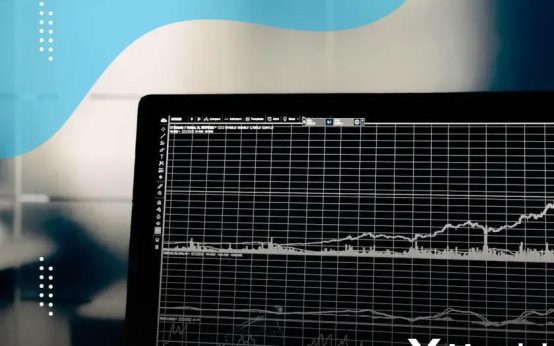
Inflation in the US remains a critical topic as new data presents both challenges and opportunities for policymakers. The latest figures show nuanced changes, leaving the market divided over the Federal Reserve’s next move regarding interest rate cuts. In this analysis, we will explore how the new inflation data is affecting market sentiment and examine the potential implications for future economic policies. Stay tuned as we delve into market reactions, expert opinions, and forecasts for what’s to come. With the US economy in a state of flux, understanding these dynamics is key for investors and policymakers alike.
New Inflation Data Overview
Recently released inflation data has provided new insights into the economic landscape in the United States. This comprehensive data set includes key indicators such as consumer price index changes, wage inflation, and core inflation metrics. Understanding these figures is crucial for economists and policymakers as they assess the current economic climate.
The consumer price index (CPI), a vital measure of inflation, showed a moderate increase in comparison to the previous month. This rise in CPI often reflects the fluctuating costs of goods and services faced by consumers nationwide. Wage inflation also plays a significant role, as shifts in labor costs can influence overall inflationary pressures.
Additionally, there’s a keen focus on core inflation metrics, which exclude volatile categories like food and energy. These metrics offer a clearer view of the underlying inflation trends and potential sustained price increases. Analysts scrutinize these numbers to predict future market behavior and to inform monetary policy decisions.
As we delve deeper into this new inflation data, it’s essential to consider its impact on fiscal strategies and economic planning within both public and private sectors. The data’s integrity and interpretation will directly influence market expectations and policy formation.
Market Reactions and Opinions

The financial community is abuzz with discussions surrounding the latest inflation data in the US. Various stakeholders are expressing differing perspectives on what these numbers mean for the economy. While some investors feel that the Federal Reserve may opt to maintain its current interest rates, others believe a cut is inevitable. Traders are analyzing recent statistics closely, considering how inflation figures might impact stock market dynamics. Investors are especially concerned about potential effects on bond markets, as interest rates play a crucial role in bond yield calculations.
The stock market itself has exhibited mixed reactions; some sectors are optimistic, banking on possible policy adjustments, while others remain cautious, fearing inflationary pressures could outweigh any rate cut benefits. Financial analysts are divided, debating whether the recent data provides sufficient justification for an interest rate change.
Emerging Markets Concern
Many are also focusing on how US economic policies might affect global markets, particularly emerging economies.
Ultimately, opinions fluctuate as experts try to predict the Federal Reserve’s next move. Investors are encouraged to monitor statements from key economic figures, assess market trends, and adjust portfolios accordingly. In the meantime, economic forecasts will continue to shape decisions as stakeholders await more definitive guidance from the central bank.
Implications for Future Rate Cuts
The release of new inflation data in the US has stirred significant discussion among market analysts and investors. A critical aspect of these discussions revolves around how this new information might influence the Federal Reserve’s decisions regarding future interest rate cuts. Understanding the implications of this data is vital for both policymakers and market participants.
The data indicates a complex economic environment where inflation rates may not have stabilized as expected. In such scenarios, the Federal Reserve may find itself reassessing its current monetary policies. The possibility of future rate cuts could be more closely aligned with measurable economic indicators instead of following a predefined path. This approach could help mitigate risks associated with premature financial decisions that might affect economic recovery.
Additionally, if inflation trends suggest persistent increases, the Federal Reserve might exercise caution by delaying rate cuts. This tactic can ensure that inflation does not spiral out of control. On the other hand, should the data reflect a slowing down, it could encourage more aggressive rate reductions to boost economic growth.
Financial experts argue that potential rate cuts could have far-reaching effects on consumer spending, borrowing costs, and overall economic momentum. Sectors such as housing and retail could see significant fluctuations based on these monetary adjustments. By keeping a pulse on these statistics and their likely implications, businesses and consumers can better anticipate shifts in the economic landscape.
Expert Predictions and Trends
Many economic analysts are weighing in on the new inflation data, examining how these numbers will influence the Federal Reserve’s decisions. Some experts forecast that inflation may remain steady, necessitating a cautious approach by policymakers. The possibility of a rate cut divides opinions, with some advocating for proactive measures to stimulate growth. Others argue for patience, pointing to potential economic overheating.
Seasoned financial experts emphasize the need to monitor core inflation indicators closely. This data is pivotal as it excludes volatile items like food and energy, offering a clearer picture of underlying inflation trends. A section of experts believes that if core inflation stabilizes, the Fed might delay rate cuts longer than anticipated.
The debate continues as some experts predict diverse scenarios where market pressures could compel a quicker response from the Fed. Geopolitical tensions and supply chain disruptions are variables that experts are also considering. They highlight that these factors could unexpectedly shift the economic landscape, influencing inflation dynamics significantly.
Anticipated Industry Trends
Financial markets are eagerly observing trends in consumer spending and wage growth, as these play critical roles in shaping inflation. Industry insiders expect technology and healthcare sectors may exhibit resilience, potentially offsetting broader market weaknesses. The consensus suggests maintaining flexibility, as economic conditions could evolve rapidly, underscoring the importance of agile strategies in the current climate.


 Diversification Benefits: Explore Risks with Alternative Investments
Diversification Benefits: Explore Risks with Alternative Investments  How to Detect Unauthorized Transactions Fast and Securely
How to Detect Unauthorized Transactions Fast and Securely  Foreign Transaction Fees: How They Affect Travelers’ Budgets
Foreign Transaction Fees: How They Affect Travelers’ Budgets